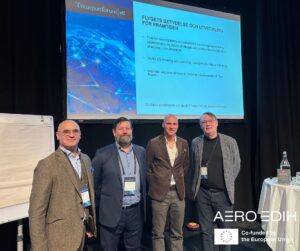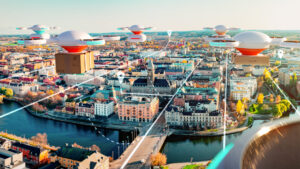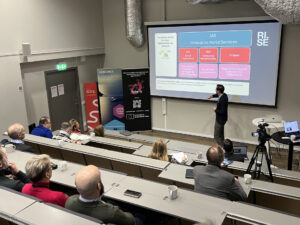If price and speed rule, then drones are already a better option than diesel trucks for certain transports.
This is shown by a new study at the University of Gävle that compared ”last mile” deliveries between and within cities. – I think the breakthrough for deliveries with drones will come within five years, says Aishwarya Raghunatha, PhD student in energy systems.
Last mile means the last stage of a product delivery, i.e. the distance when goods are transported from a distribution center to an agent, where the end customer then collects his package. The study, which was published in the respected scientific journal Nature Scientific Reports, compared loads of around 500 kilos, which corresponds to an average last mile delivery, which today is exclusively handled by trucks.
– The technology to use drones for transport is already here, what is missing is above all more energy-efficient batteries and infrastructure. Large drones may be cheaper in their life cycle due to automation, but electric trucks are more emissions friendly for the kind of logistics we have today. Also, drones are arguably the fastest. All in all, this means that drones are a potential alternative to trucks, says Aishwarya Raghunatha, PhD student in energy systems at the research school Future-Proof Cities at the University of Gävle.
Fastest and cheapest
The comparison includes trucks and light trucks with drivers, and a larger model of drone that Nasa produced called ”Side-by-side”. Among other things, the study has compared costs for the vehicles’ entire life cycle, emissions of carbon dioxide, and how quickly deliveries can take place. Aishwarya Raghunatha has looked at four different types of deliveries: long distances between cities, shorter distances between cities, and shorter and longer deliveries within cities. The drones proved to be the fastest and cheapest for all four delivery types, while the electric trucks have the lowest climate impact. It should be added that the calculation operation is based on a forecast for the years 2027–2032, with the assumption that electric trucks have taken over a larger part of truck transport. Today, diesel trucks account for approximately 96–98 percent of this type of transport, and electric trucks for the rest.
”Breakthrough within five years”
According to Aishwarya Raghunatha, the drones can contribute to a faster electrification of transport, mainly because they are cheap to operate. The drones will not be able to manage the last mile deliveries on their own in the future, but both drones and electric trucks will be needed – a combination that would provide both reduced emissions and lower transport costs. It is instead of the last part of the deliveries, i.e. to the home of the end customer, that Aishwarya Raghunatha sees the greatest potential for drones.
Not having to use the car to pick up packages is both cheaper and more environmentally friendly. How efficiently tomorrow’s transport is designed will depend on many factors, and more research is needed on use cases and their impacts, investment in infrastructure and charging centres, changes in regulations and regional planning. That’s why I think the breakthrough for drone deliveries will come within five years, says Aishwarya Raghunatha.
Not having to use the car to pick up packages is both cheaper and more environmentally friendly. How efficiently tomorrow’s transport is designed will depend on many factors, and more research is needed on use cases and their impacts, investment in infrastructure and charging centres, changes in regulations and regional planning. That’s why I think the breakthrough for drone deliveries will come within five years, says Aishwarya Raghunatha.
We need more tests and more research to understand what type of drone can be used for which purpose before the drones can be fully used in the logistics system, says Aishwarya Raghunatha















